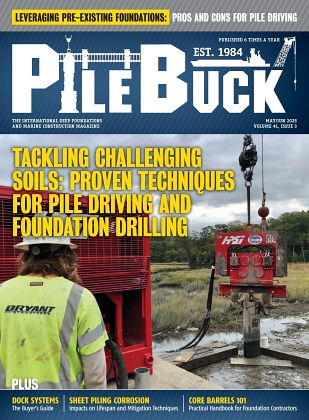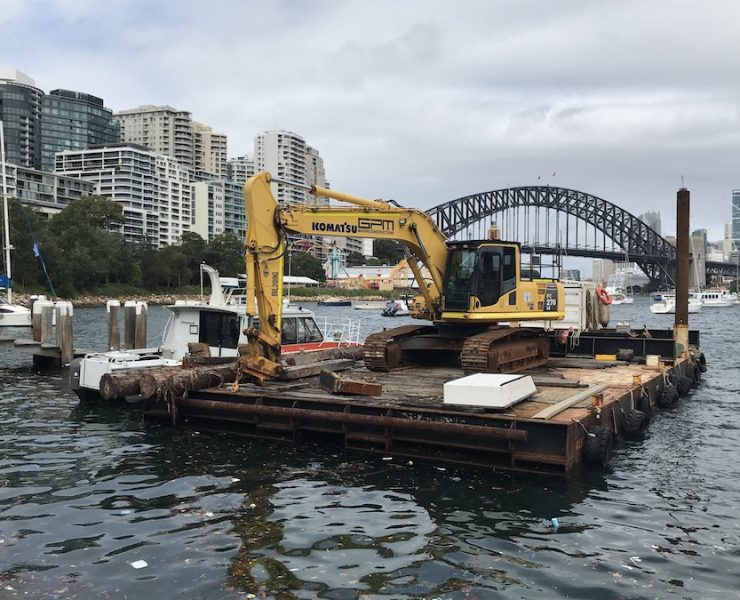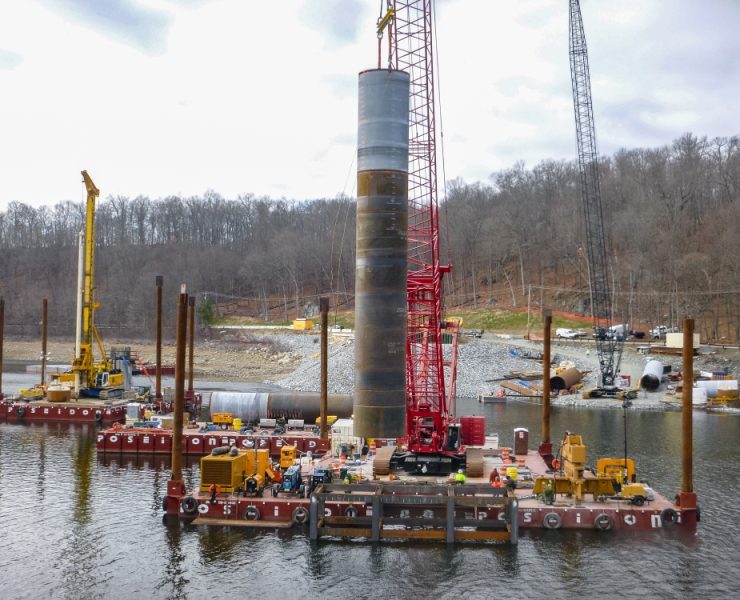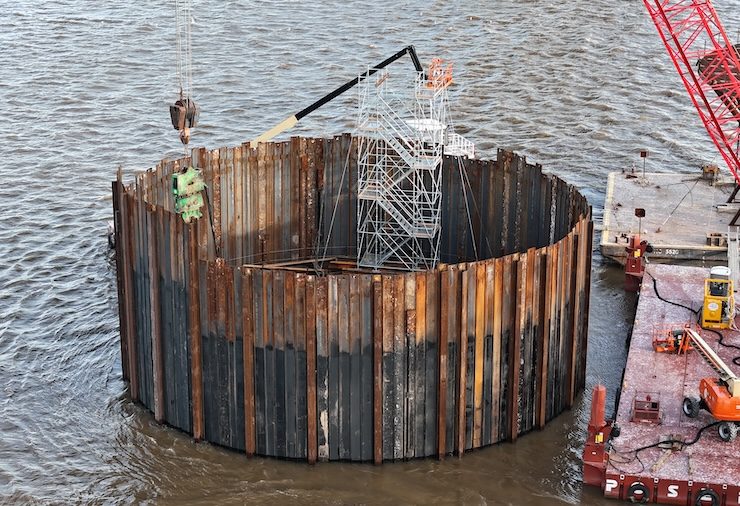Utilizing Drones to Increase Efficiency and Safety on Marine Construction Projects
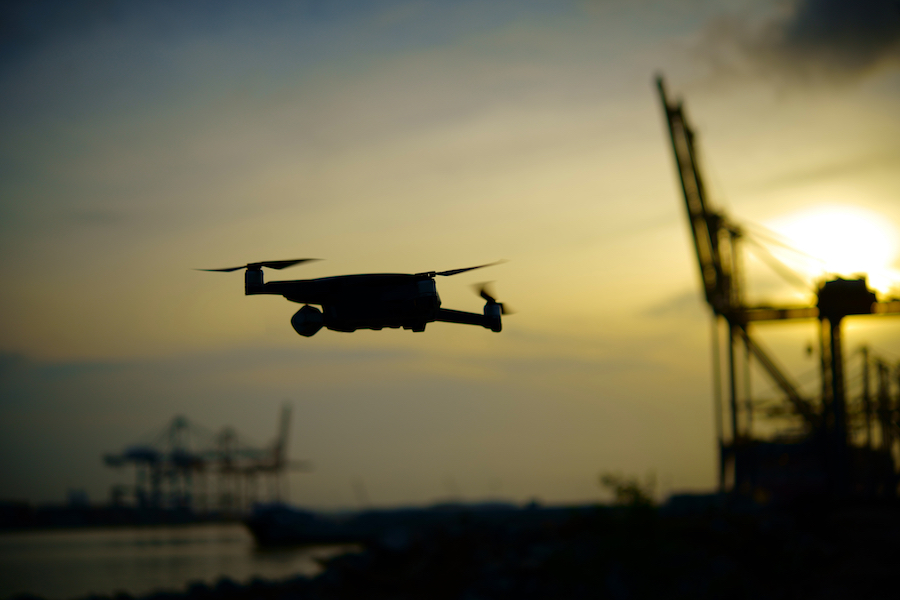

View the complete article here.
Needless to say, precision and accuracy are crucial factors in the marine construction and surveying fields. That’s where drones come in.
With the ability to access difficult and sometimes dangerous areas, drones are able to provide detailed images and data for just about any type of marine construction project. Drones offer a large variety of other benefits as well, which we’re going to cover.
And, yes, drones are also able to capture stunning footage from your project to show off on your blog and social media.
In this article, we’re going to cover the advantages of drones in marine construction—as well as the different applications, types of drones, and tips for using these drones.
Advantages of Using Drones for Marine Construction
Using drones for marine construction projects has several advantages, including:
- Improved efficiency: Drones are able to collect detailed data and images in a shorter amount of time than traditional methods of data collection.
- Increased safety: Drones can access areas that are difficult or dangerous for workers to reach—such as offshore platforms, ships, and other marine structures.
- Access hard-to-reach areas: Drones are able to access areas that are difficult to reach by vessels, including tight spaces and shallow waters.
- Detailed inspection: Drones can be equipped with high-resolution cameras and sensors such as LiDAR, which can provide detailed information—in real-time—about the progress of the project, as well as the condition of any equipment involved.
- Autonomous functions: With the ability to operate 24/7, drones can be programmed to perform specific tasks autonomously—reducing the need for human intervention.
These are just some of the key advantages of utilizing drones on a marine construction project. More ideas for using drones are being discovered each year.
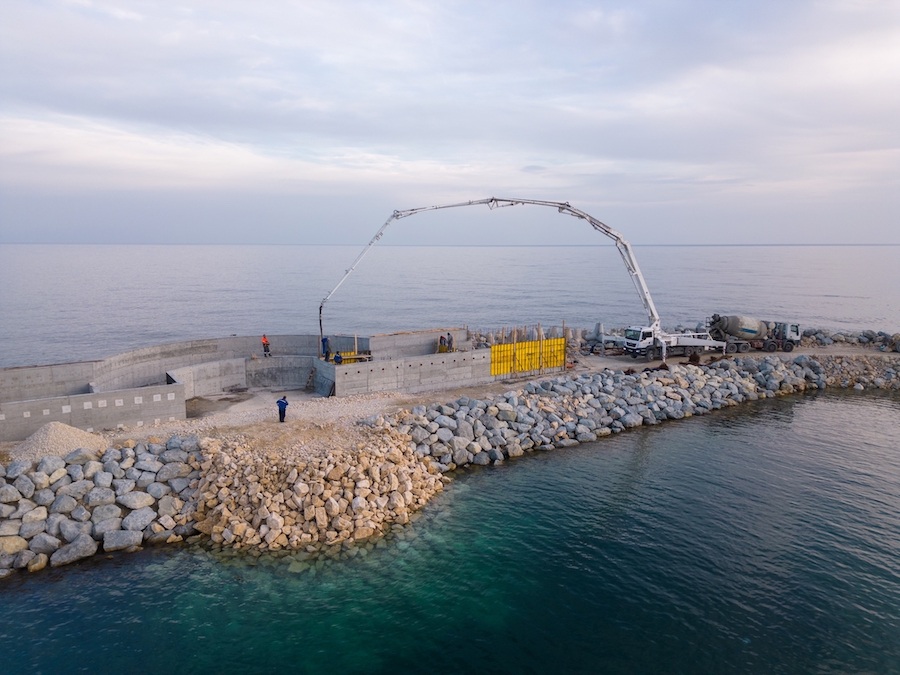
Marine Construction Applications for Drones
Given that there are so many advantages offered by drones, there are a variety of applications where drones are used in marine construction, including:
- Ports and harbors: In addition to inspection and surveying, drones can assist with the construction and maintenance of ports and harbors.
- Surveying: Drones can be used to survey coastal and marine environments—such as beaches, dunes, and wetlands—which is especially beneficial for potential coastal protection and restoration projects.
- Inspection of marine structures: Drones can be used to inspect the condition of marine structures—such as bridges, breakwaters, and seawalls—which can help to identify potential problems, as well as plan for maintenance and repairs.
- Inspection of offshore platforms and ships: Drones can be used to inspect the condition of offshore platforms and ships—including the hull and deck.
- Offshore wind farms: Drones can be used to inspect wind turbines, their foundations, and the surrounding areas of offshore wind farms.
Like we mentioned earlier, new uses for drones in marine construction are being discovered each year.
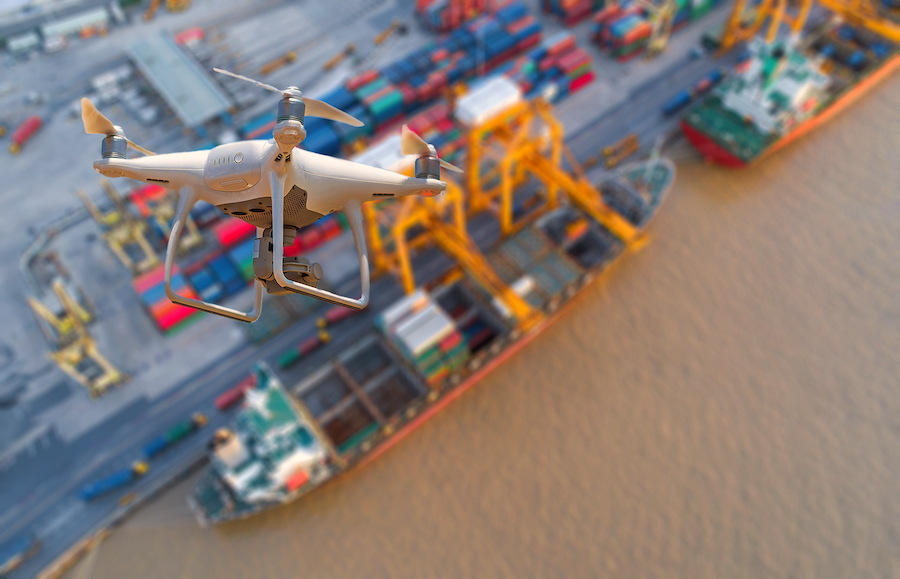
Types of Drones Used in Marine Construction
Of course, there are different drones available on the market—each with their own, unique functions. The most common types include:
- Fixed-wing drones: With a wing design similar to that of an airplane, fixed-wing drones are capable of long-distance flights and can cover large areas quickly. These drones are ideal for long-range survey, mapping, and inspections of large marine structures such as bridges, offshore platforms, and wind farms.
- Multirotor drones: These drones have multiple rotors and are more agile than fixed-wing drones. They are able to fly in tight spaces and hover in one place—making them ideal for detailed inspections of marine structures, as well as close-up views of coastal and marine environments.
- Amphibious drones: Designed to operate both in the air and in the water, amphibious are ideal for underwater inspections and surveys of marine structures, shipwrecks, and underwater pipelines.
- Underwater drones: Designed to operate underwater, underwater drones are used to inspect underwater structures such as shipwrecks, pipelines, and ports.
It should also be noted that drones offer an array of accessories as well, including—but not limited to—sensors, cameras, and sonar devices.
Tips for Drone Usage on Marine Construction Projects
Here are some crucial tips to keep in mind while operating drones on a marine construction project:
- Choose the right drone: Choose a drone that is suitable for the specific requirements of the project—considering factors such as the size of the area to be surveyed, the type of data to be collected, and the accessibility of the area.
- Train operators and maintenance crew: Train operators and maintenance crew on how to properly operate and maintain the drone. This training may include how to navigate, control, and troubleshoot the drone—as well as how to perform regular maintenance and repairs.
- Conduct a site assessment: Before using the drone, conduct a site assessment to identify any potential hazards or challenges that may affect the drone’s operation. These hazards may include wind speed, visibility, and the presence of other aircraft in the area.
- Use of appropriate software: Use appropriate software to plan, execute, and process the data collected by the drone. This can include software for navigation, flight planning, data processing, and data management.
When using a drone—or any sort of technology—on a marine construction project, it’s always ideal to read any available manuals to ensure proper usage and safety. Remember, that there isn’t just expensive equipment at risk… but lives on the line as well.
View the complete article here.
How are drones utilized in marine construction projects?
Drones are utilized in marine construction projects in several ways. They can be used for site surveying, monitoring project progress, inspecting structures, and improving safety. Drones equipped with cameras or sensors can collect high-resolution images or data, enabling detailed analysis and accurate measurements. They can access hard-to-reach or hazardous areas, reducing risks for workers.
What are the benefits of using drones in marine construction?
Using drones in marine construction can provide many benefits. They can improve efficiency and accuracy in surveying and inspections, reduce risks and costs, facilitate better project management and communication through real-time and detailed imagery or data, and support environmental monitoring and compliance. However, their use also requires compliance with regulations, and appropriate training and procedures to ensure safety and effectiveness.

